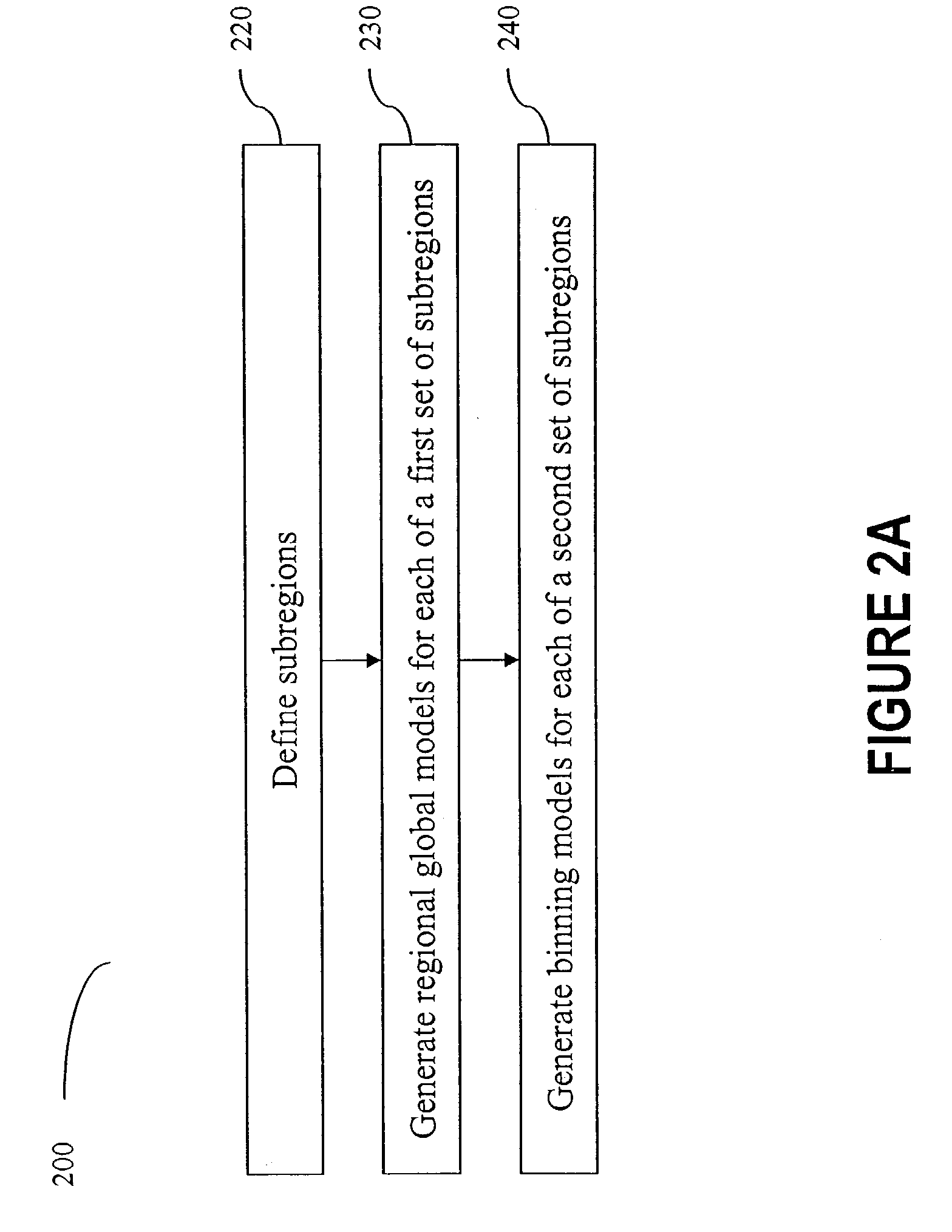Method and apparatus for modeling devices having different geometries
a technology of geometries and devices, applied in adaptive control, process and machine control, instruments, etc., can solve the problems of overly complicated, burdensome traditional breadboard methods, and reduced individual device sizes,
- Summary
- Abstract
- Description
- Claims
- Application Information
AI Technical Summary
Benefits of technology
Problems solved by technology
Method used
Image
Examples
Embodiment Construction
As shown in FIG. 1, system 100, according to one embodiment of the present invention, comprises a central processing unit (CPU) 102, which includes a RAM, and a disk memory 110 coupled to the CPU 102 through a bus 108. The system 100 further comprises a set of input / output (I / O) devices 106, such as a keypad, a mouse, and a display device, also coupled to the CPU 102 through the bus 108. The system 100 may further include an input port 104 for receiving data from a measurement device (not shown), as explained in more detail below. The system 100 may also include other devices 122. An example of system 100 is a Pentium 133 PC / Compatible computer having RAM larger than 64 MB and a hard disk larger than 1 GB.
Memory 110 has computer readable memory spaces such as database 114 that stores data, memory space 112 that stores operating system 112 such as Windows 95 / 98 / NT4.0 / 2000, which has instructions for communicating, processing, accessing, storing and searching data, and memory space...
PUM
 Login to View More
Login to View More Abstract
Description
Claims
Application Information
 Login to View More
Login to View More - R&D
- Intellectual Property
- Life Sciences
- Materials
- Tech Scout
- Unparalleled Data Quality
- Higher Quality Content
- 60% Fewer Hallucinations
Browse by: Latest US Patents, China's latest patents, Technical Efficacy Thesaurus, Application Domain, Technology Topic, Popular Technical Reports.
© 2025 PatSnap. All rights reserved.Legal|Privacy policy|Modern Slavery Act Transparency Statement|Sitemap|About US| Contact US: help@patsnap.com



